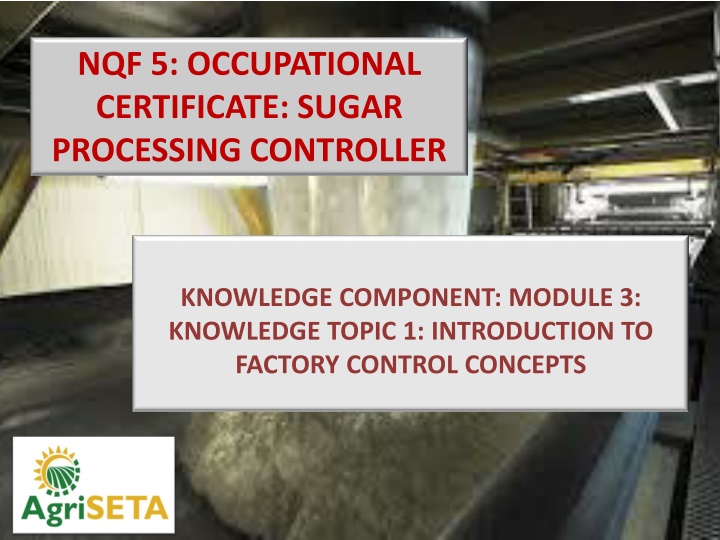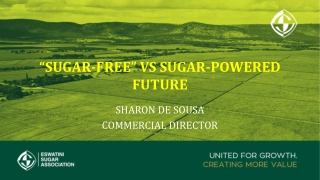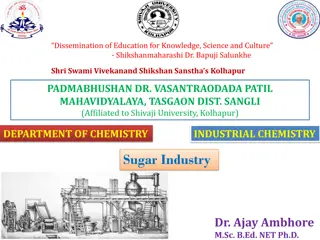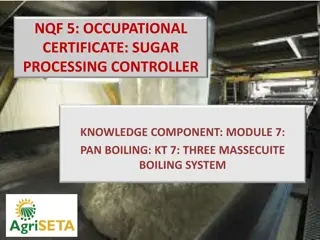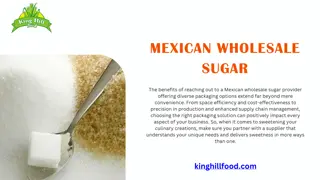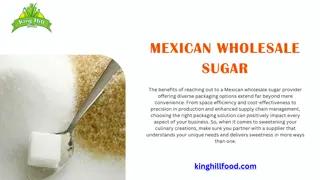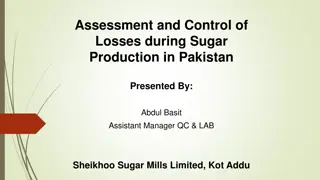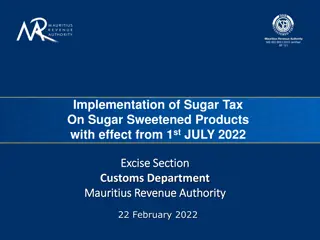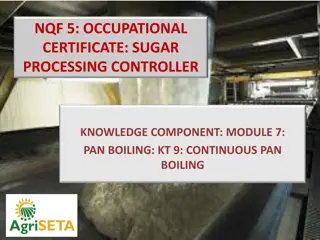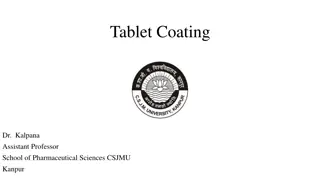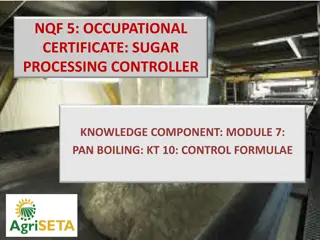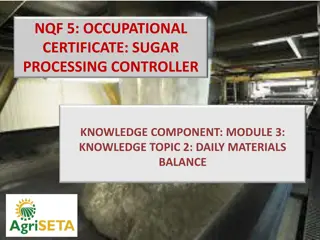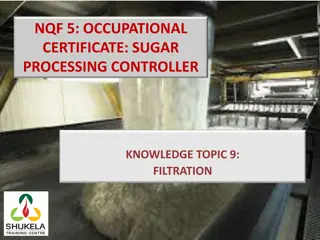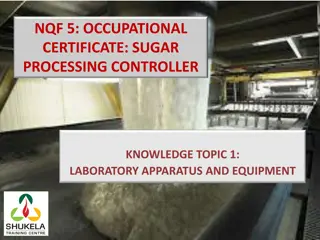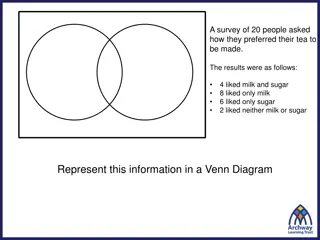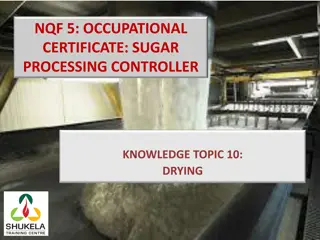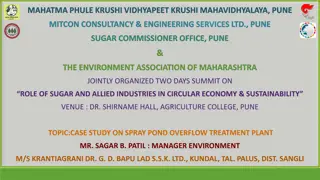Introduction to Factory Control Concepts in Sugar Processing
Sugar processing factory control involves using the laboratory as an instrument of control to manage processes, detect losses, provide management with financial information, and ensure efficient operations for increased profits. The stages in factory control include analyzing the product, daily averaging of analytical results, and preparing reports based on daily, weekly, and monthly figures. Different methods of averaging and calculating figures are used to monitor and maintain control over the sugar processing operations.
Download Presentation

Please find below an Image/Link to download the presentation.
The content on the website is provided AS IS for your information and personal use only. It may not be sold, licensed, or shared on other websites without obtaining consent from the author.If you encounter any issues during the download, it is possible that the publisher has removed the file from their server.
You are allowed to download the files provided on this website for personal or commercial use, subject to the condition that they are used lawfully. All files are the property of their respective owners.
The content on the website is provided AS IS for your information and personal use only. It may not be sold, licensed, or shared on other websites without obtaining consent from the author.
E N D
Presentation Transcript
NQF 5: OCCUPATIONAL CERTIFICATE: SUGAR PROCESSING CONTROLLER KNOWLEDGE COMPONENT: MODULE 3: KNOWLEDGE TOPIC 1: INTRODUCTION TO FACTORY CONTROL CONCEPTS
Background: Sugar Processing Factory Control Calculations The laboratory is used as the instrument of control in a sugar factory The purposes of factory control are: To control the process. To detect and indicate the extent of losses. To supply management with information for financial and administrative purposes. To make comparisons with mills of a similar nature Figures are provided as a guide to process and engineering staff and also management to determine whether the factory is running efficiently. If the factory is running efficiently, profits are boosted and if figures are below those budgeted, profits are reduced.
Stages involved in factory control Analysis of the product Daily averaging of analytical results Daily report using the daily average figures and tonnages Weekly report using the week s daily figures, stock in process and the previous week s figures. To date figures are calculated at the same time. Monthly figures using the previous month s to date figures and the current month s to date figures. The last month s to date figures are the season s results.
Daily Averaging There are two ways by which averages can be calculated. The arithmetic average is the sum of the analytical results divided by the number of analyses. The weighted average takes into consideration the quantity of material associated with the analysis. Wherever possible the weighted average is used as it is a more accurate method.
Daily Figures The calculations necessary for the daily materials balance can be done once the averages are complete. The figures are carried forward daily to obtain a weekly to date figure at the end of the week or run. The process starts again for the next week or run. Figures carried forward must be weighted average figures.
Week and To-Date Figures The weekly to-date figures become the week figures at the end of the week. These figures are then combined with the previous week s figures to give the new to-date figures. Once again we want a running total of the tons of cane crushed. To find the data for any particular week we use: Week = (To-Date) (Previous To-Date)
Monthly and Annual Figures MONTHLY FIGURES These figures are produced at the end of each month. They are calculated in the same way: Month = (Month To-Date) (Previous Month To- Date) ANNUAL FIGURES These are produced at the end of each season. They are To-Date figures at that time.
Cane Payment Mill Balance This entails the determination of the brix, pol and fibre of cane from the analysis of mixed juice and final bagasse. Direct Analysis of cane (DAC) This entails the direct analysis of individual cane consignments for brix, pol and fibre. Both of these analyses depend on the analysis of fibre by the direct analysis of cane.
Formulae for Factory Control Calculations There are three basic types of calculations: Tons Percentages Performance formula
Tonnage calculations Water Brix Moisture Fibre Pol in mixed juice Brix in mixed juice Suspended solids in mixed juice Corrected pol in mixed juice Corrected brix in mixed juice Pol in cane (Mass balance pol) Brix in cane (Mass balance brix) DAC fibre in cane DAC brix in cane DAC pol in cane Cane per hour Fibre per hour
Percentage Calculations Fibre % bagasse Pol % cane Fibre % cane Brix % cane Fibre in bagasse % cane (uncorrected) Imbibition % fibre Corrected brix % mixed juice Corrected pol % mixed juice Purity of mixed juice Mixed juice % cane Imbibition % cane Pol % cane by material balance (Pol % cane by mass balance) Brix % material balance (Brix % by mass balance) Pol factor Brix factor Fibre factor Bagasse Purity Material balance cane purity DAC purity
Performance Formulae Extraction Corrected reduced extraction (CRE) Boiling house recovery
